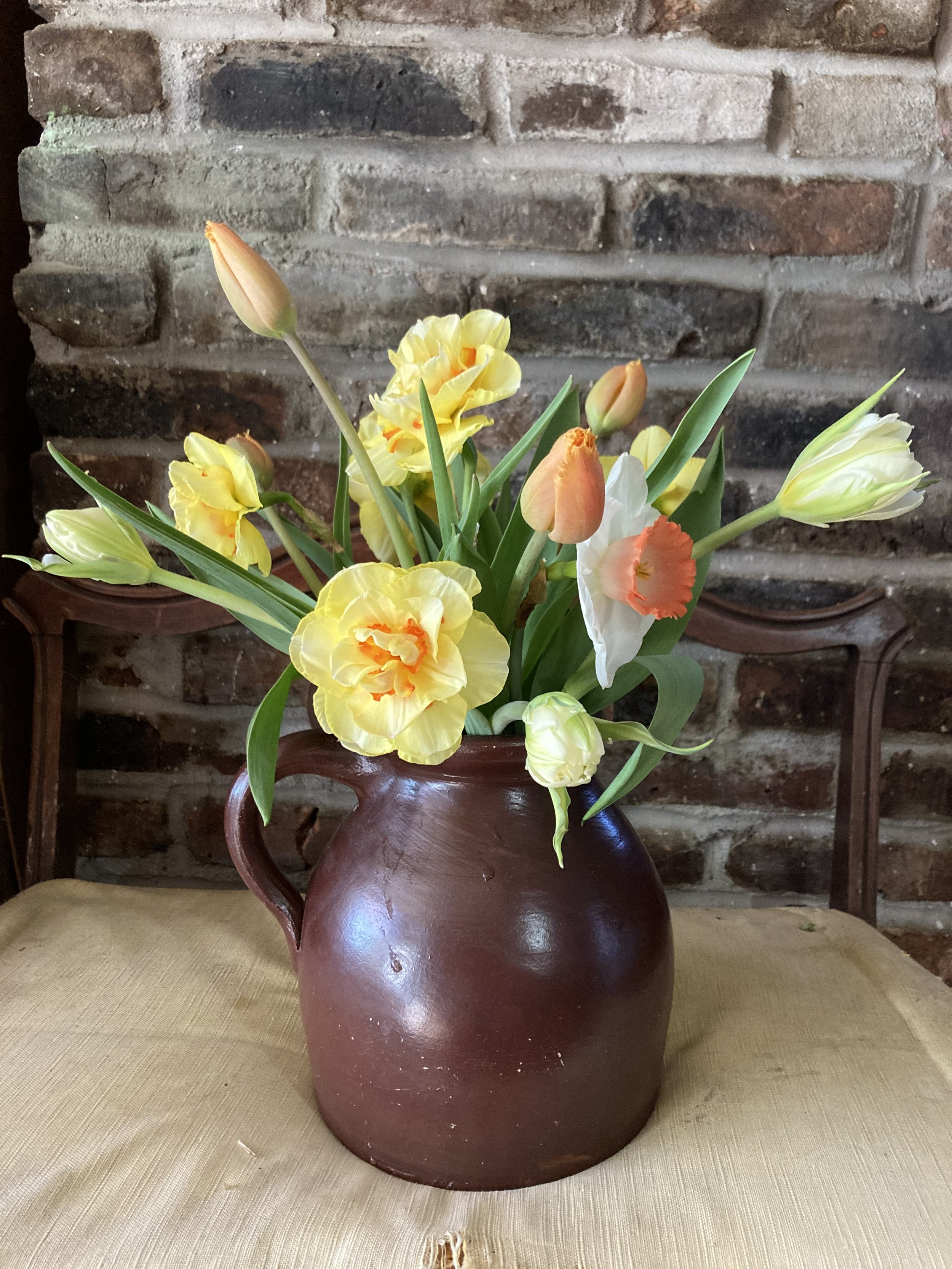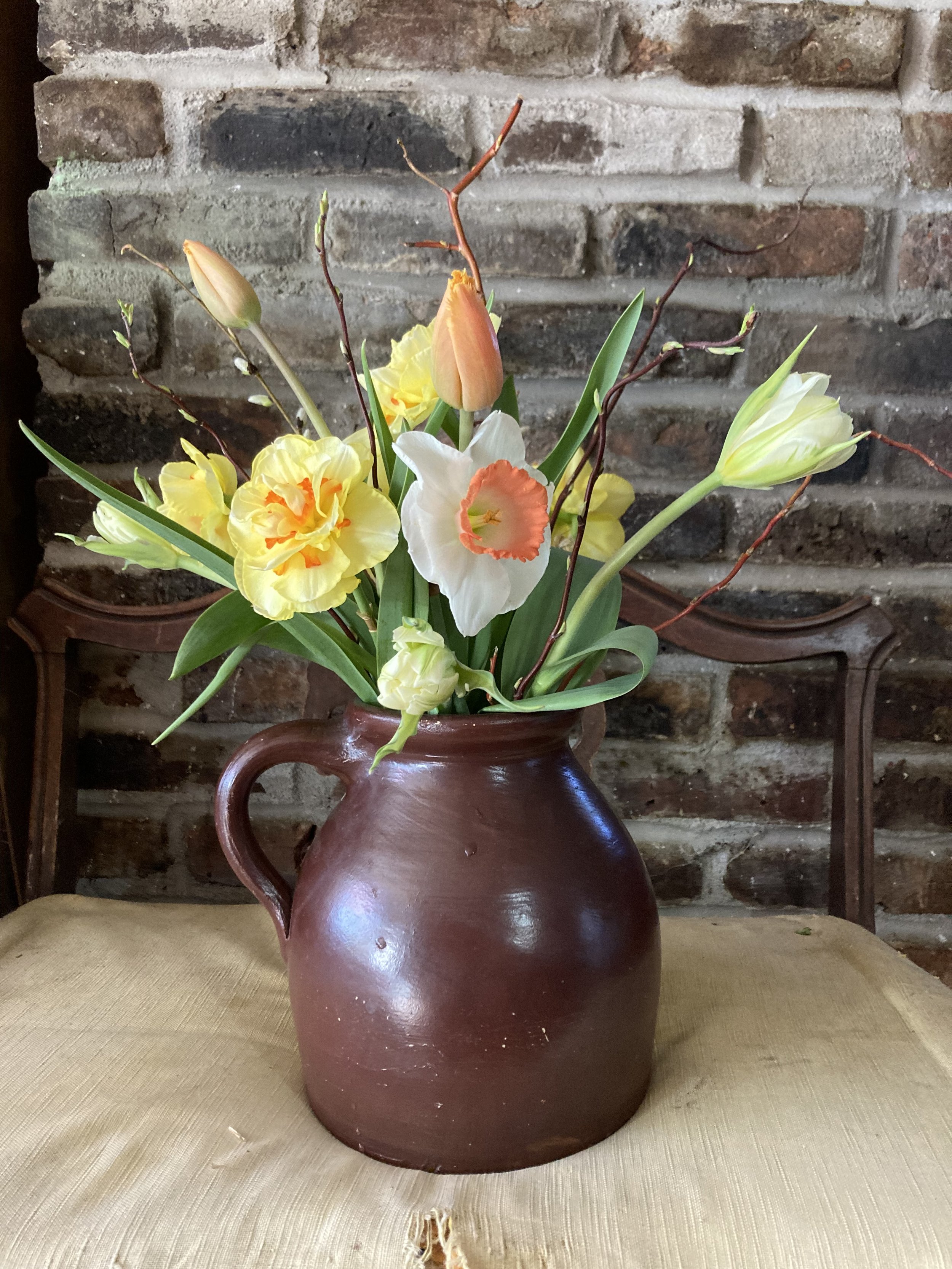The wonderful world of willows- A SPRING TULIP BOUQUET COMPANION
It’s early April here in the Adirondack mountains and we just had our biggest snowstorm of the season. Emily described it perfectly in an instagram post “Somehow, the winter that never was- just won’t end…”
While taking the occasional break from moving snow I surveyed my garden beds. The week before I was taking pictures of white and purple crocus surrounded by fresh green grass and emerging daffodils. These same patches were now under 17 inches of snow. Oof.
Photo from my commute- April 4th, 2024.
Needless to say, there are not many options for bouquet fillers this time of year that don’t require the warmth or cover of a greenhouse. One thing we can reliably depend on this time of year is our crop of “sticks.” Our rows of decorative willows help to provide some early spring interest in bouquets or arrangements.
The addition of willows to the arrangement above adds some extra texture and visual interest. Some of the curly willow branches have started to leaf out-providing a much loved burst of green in the early spring.
Additionally, branches of willow can help provide structural support for flowy stems in arrangements.
Flowers and willow grown at Little Farmhouse Flowers
Photos by Karissa Monette
DECORATIVE WILLOW FOR FLORAL DESIGN
There are quite a few different types of decorate willows available on the market today. Here are a few of my favorites-
Curly /Corkscrew willow
Salix matsudana ‘Tortuosa’.
Just like the name implies- Curly willow is prized by florists for the interesting curly “sticks”. Curly/corkscrew willow is available in various shades of green, red, yellow, burgundy.
Fantail willow-
Salix sachalinensis ‘Sekka’ is also known as Japanese fantail willow.
Fantail willow plants are known for the beautiful curled & flattened fasciated stems. The growth habit and vigorous nature of this willow make it an excellent natural screen-
Pussy willow
Prized for their catkins- there are many different varieties of pussy willow available in many different colors. Some varieties are cultivated specifically for the floral trade & some are native species.
Pussywillows native to us here in the Northeastern United states are Salix discolor.
Yellow French Pussywillow cultivar in April.
Some varieties of French pussywillow (Salix caprea) can be considered invasive in some areas. Photo by Karissa Monette
growing willow
When starting a willow patch- keep in mind that willows love water and don’t mind having “wet feet.” You should be able to find a good selection of decorative willow plants at your local garden center or nursery. There are a number of willow distributors you can find online as well.
Willow is easy to root if you’re interested in starting your own plants from cuttings. After keeping some cuttings in a vase with tulips for 8 days, they started putting on some significant root development. You can pop these rooted cuttings into some soil to start your own plants.
Alternatively you can pop the unrooted cuttings directly into some moist soil- either in pots or directly into the ground. The cuttings should take root within a few weeks. Once you have some established willow plants you can start taking cuttings from them as well.
Some folks use “willow water” as a rooting hormone for other plants. I found an interesting research study by Michelle Terrazino at Citrus College showing the effectiveness of willow water as a rooting stimulant-
Do you have a favorite variety of willow? Let us know in the comments below!
-Karissa





